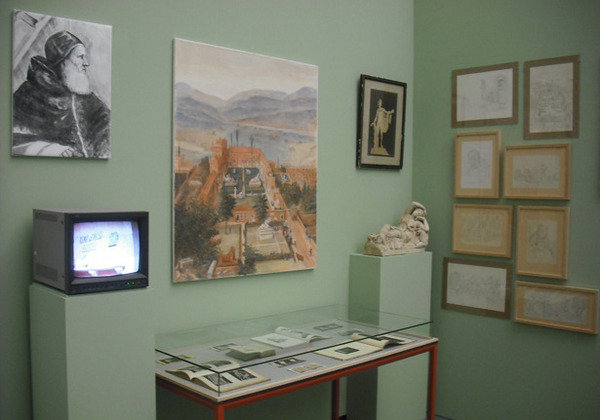20/11/2014
The Unmaking of Art
e-flux, New York
The Unmaking of Art is an exhibition based on a recent lecture by Walter Benjamin. The exhibition is a technical realization of a form of historical accounting that produces its precedents and antecedents simultaneously.

On the first day of a sophomore art history class, two students meet: an art student and a history student. They begin talking. The art student explains that she'd grown tired of learning formal drawing techniques, when it was actually her political convictions that brought her to art. This sounds strange to the history student, who was fed up with politics after becoming increasingly suspicious that her courses were actually feeding her a chain of events carefully selected to justify the position of the government, all in the name of history. In arriving at an art history class, the two students wanted to see how an artistic tradition might set the record straight.
But art history only made things more confusing. Sitting in a dark classroom gazing at slides, nothing makes sense anymore. Jacques-Louis David, Laocoön and His Sons, Gérôme, Rafael, and Courbet all fell apart as artworks and as antiquities. Rather than clarify history, they suddenly become prisms for asking more questions: Why was this artwork created in the first place? Why does it look the way it does, and whose interests does the depiction serve? Who paid for the materials? Who dug it out of the ground? Whose hands did the work pass through?
And the most important question: How did a slide of this particular artwork arrive on this projection screen in this exact university, and not a slide of another object altogether?
To their amazement, the two students realize that they can only begin to address these questions by accepting two things: art is fake and history is fake. It is just as both had suspected in their respective drawing classes and history courses. The artist realizes that the force moving her hand in the drawing class did not come from her art professor's frustrations (or for that matter her own). Rather, it was the same force that moved the hand of Gérôme. The history student realizes that all historical accounts are fictions, but that artworks might offer a way of intervening into the way those fictions are written. Or they may allow for building a position larger than art, large enough to surround the writing of history itself: a meta-narrative. Suddenly, in the art history class, time starts to ripple. Reality itself hesitates. Notions of copy and original merge, and their material becomes confused. Causality and the fabric of space-time start to twist around each other. Events can no longer be stabilized to explain other events. They move backwards, then forwards, then sideways.
The Unmaking of Art is an exhibition based on a recent lecture by Walter Benjamin, and will be on view at e-flux from November 21, 2014 to January 24, 2015. Comprised of three sections—the Museum of Antiquity, Rome; the Museum of Modernity, Paris; and the Salon de Fleurus, New York—the exhibition is a technical realization of a form of historical accounting that produces its precedents and antecedents simultaneously, where, for instance, medieval Europe could not have existed before it was invented as a historical period the moment David and the French Revolution destroyed it.
The two students look at each other. All of this is fine and well, they agree, but if history is whatever an epoch decides it needs to represent the past, we are left only with an accumulation of information leading nowhere—a gossip column taken to epic scale, a data dump of chronological facts. A young artist and a young historian look at each other and ask: What, then, are the stories we ultimately want to invent, the ones that take us to where we want to be?
Image: Museum of Antiquity, Belvedere Romanum. Installation view: Van Abbemuseum, Eindhoven, 2009.
Press Contact: magdalena@e-flux.com.
Opening: Friday, November 21, 6–9pm
8pm "The Unmaking of Art" lecture by Walter Benjamin
e-flux
311 East Broadway
New York, NY 10002
Hours: Tuesday–Saturday noon–6pm



